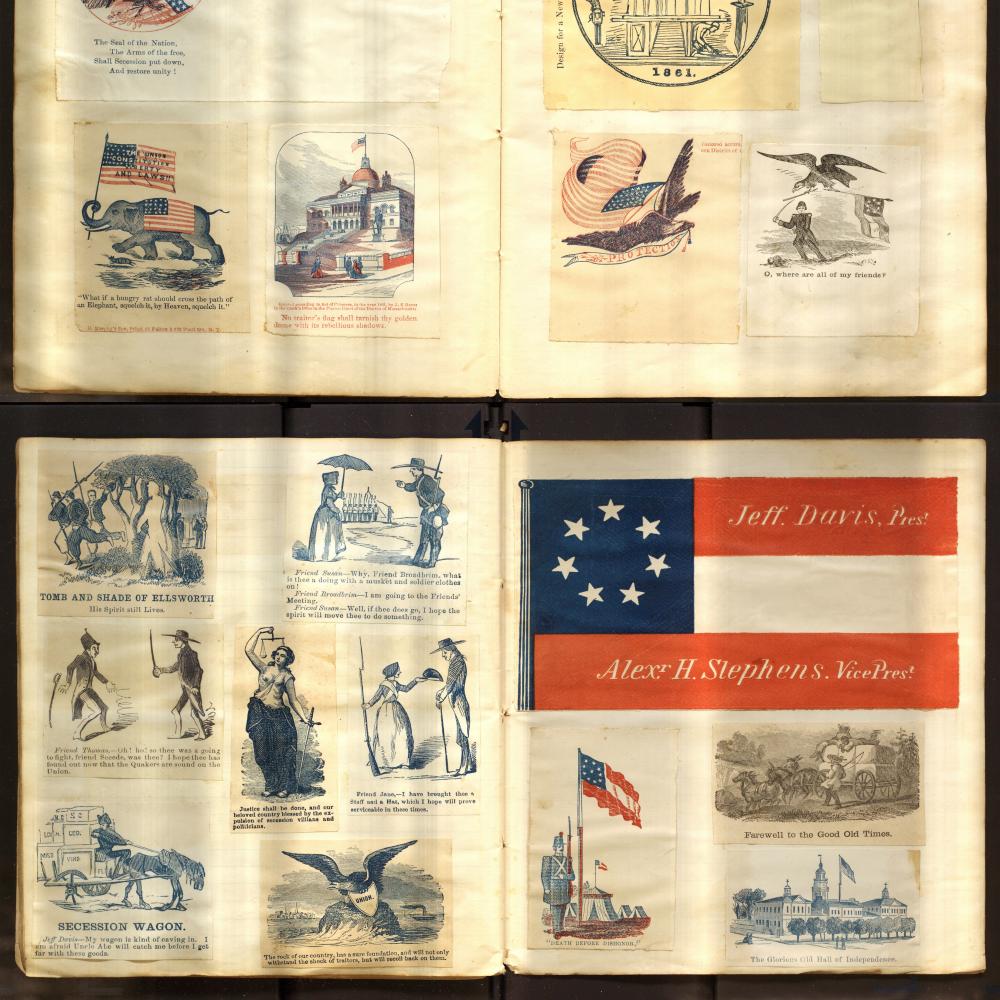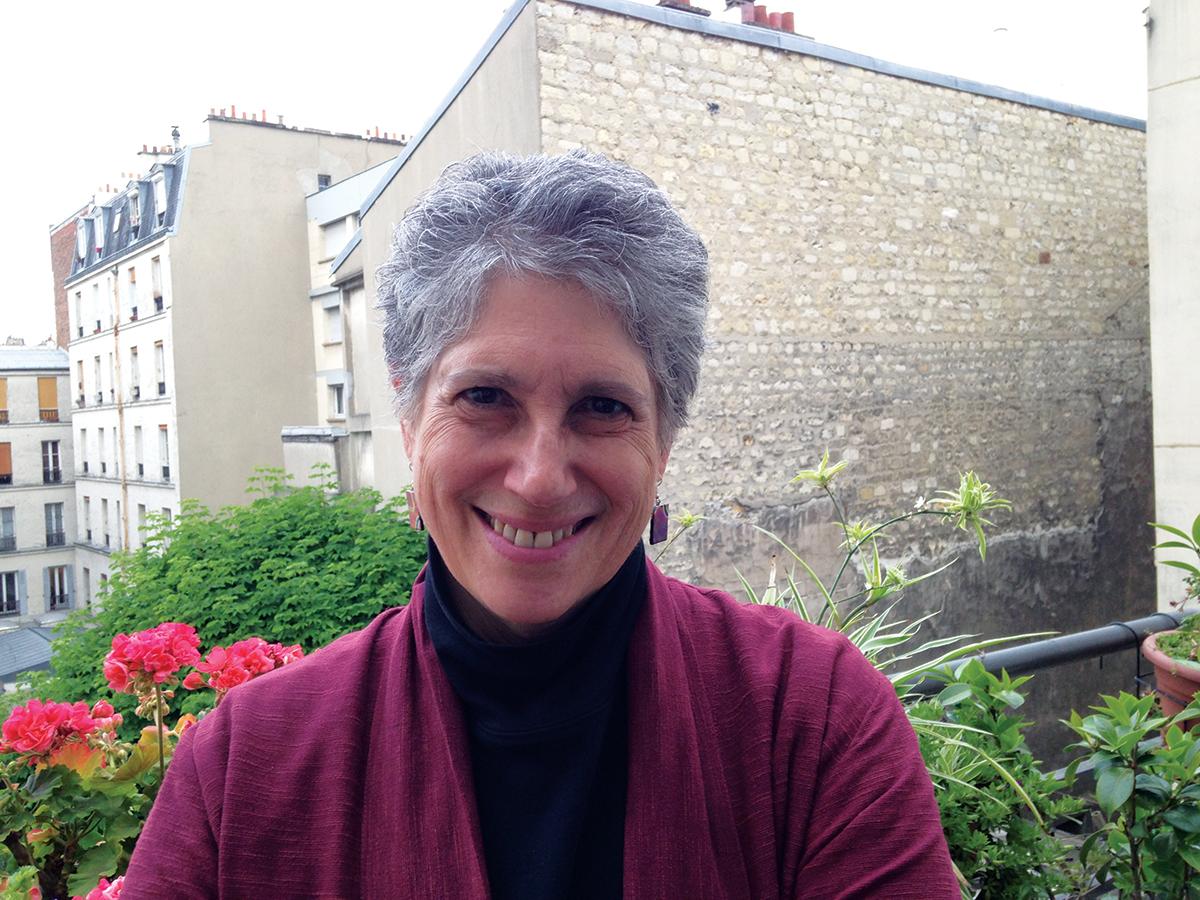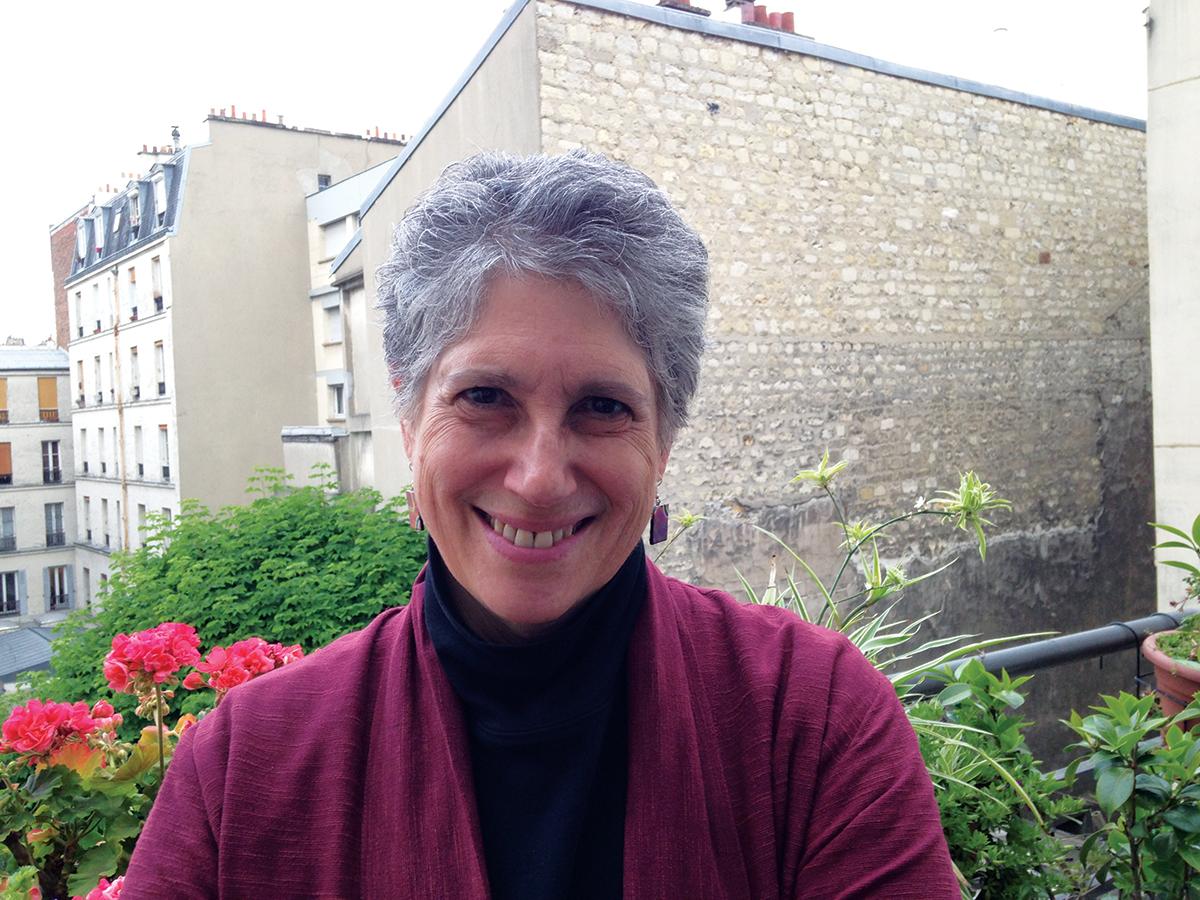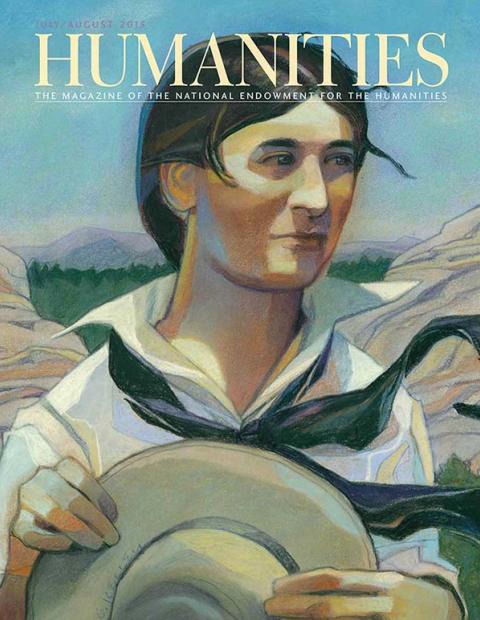These days, scrapbooking is said to be a multibillion-dollar industry with various digital analogs, but the practice of clipping, collecting, and pasting words and images into books for keepsake goes back centuries. In this IQ, Ellen Gruber Garvey, English professor at New Jersey City University, discusses her book Writing with Scissors: American Scrapbooks from the Civil War to the Harlem Renaissance (Oxford University Press, 2013), which was the 2014 recipient of the Transdisciplinary Book Award.
Apparently, scrapbook making was very popular during the Civil War. Why is that?
People experienced the war through newspapers. It’s like the way many people saved the newspaper after September 11.
Who were some notable keepers of scrapbooks?
Abraham Lincoln, Frederick Douglass, Susan B. Anthony, Elizabeth Cady Stanton. Opposition newspapers made fun of Charles Sumner for getting up in the Senate and quoting from news items in his scrapbooks as documentation.
Mark Twain’s interest in scrapbooks is puzzling.
He kept scrapbooks himself, and he sometimes shoveled newspaper material from his scrapbooks into books he published by subscription. He also invented the Mark Twain Patented Self-Pasting Scrap Book, which had strips of glue that you’d moisten with a sponge. Twain wrote great ads—claimed it would save people from profanity, since they wouldn’t rant and swear when they couldn’t find the glue pot or the cat got stuck in the glue. The ads went viral and he picked up free publicity.
Who was Will M. Clemens, and why did Twain refer to him as a “troublesome cuss.”
Don’t forget “mere maggot.” Will variously pretended to be Samuel Clemens’s brother, nephew, or cousin, though no relation.
He made a living feeding off other people’s writings, cutting, pasting, and reprinting without permission, and “wrote” Twain’s first biography by artfully snipping interviews with Twain to make it look as though he was an intimate.
Scrapbook makers repurposed printed books?
Scrapbook making was democratic because you didn’t have to pay for blank books. You could paste over printed books. Scrapbook makers often glued clippings on government reports but also sermon collections, novels, account books, even Bibles, using the book just for its pages and binding and obliterating the text beneath. Some people were scandalized by this way of disregarding the writing and treating the book as meaningless. It’s as though you looked at your dinner guests wondering if you’d like them better for their conversation or as steak.
What’s the minefield African Americans encountered while reading the white press, and did that affect the black scrapbook?
The post-Reconstruction white press was both deliberately and casually hostile to black people. Black scrapbooks critique as they collect. They comment on the white press’s errors and omissions.
What was William Dorsey’s “Colored Centenarians,” and why was it of significance?
From the 1860s to 1899, Dorsey collected over two hundred newspaper items about black people said to have been older than a hundred. Brought together, they are a collection of stories of black people involved in the founding of the country. Some were reported still working—a rebuttal to the post-Reconstruction era of the Black Laws, when African Americans were put into chain gangs, with the claim that they were lazy and wouldn’t work otherwise.
Who was “Mr. Scrapbook”?
L. S. Alexander Gumby. In the 1920s, he held soirees at his studio in Harlem. Everyone who was anyone in the Harlem Renaissance came. Visitors could look at his hundred fifty beautifully made scrapbooks on black life. He commissioned a bookplate for them, featuring three half-naked men sporting with a book.
What’s the connection between Toni Morrison’s The Black Book and scrapbook making?
The Black Book was a 1974 collection on black history and culture that Morrison worked on as an editor at Random House. It’s like a scrapbook—bills of sale for slaves, runaway ads, sheet music. It includes a clipping on Margaret Garner, the escaped slave who killed her child rather than let her be returned to slavery and was the basis for Beloved.
Can there possibly be any connection between scrapbook making and the fifteenth-century writer Christine de Pizan?
Nonprivileged groups assemble stories of notables. Christine de Pizan offered profiles of great or good women in The Book of the City of Ladies, hoping to counter tales of women’s evil. Scrapbook makers did this too. Girls and women collected examples of women’s achievements. African Americans, articles about noteworthy black people.
Favorite scrapbook?
Too many! Elizabeth Boynton Harbert, a Midwestern women’s rights advocate made several—one, made for herself, has a full record of her public speaking and writing activities. One for her mother—highly selective. Willa Cather’s aunt’s scrapbook. The young teacher in the East used it in order to plan her eventual family life on the prairies, where she became Willa’s “Aunt Franc.” It reads like a Pinterest board.
Favorite scrapbook maker?
Maybe Anna E. Dickinson, an orator, writer, and actress, who scrawled indignant commentaries on the reviews of her performances she clipped and pasted down—in a Mark Twain scrapbook.




